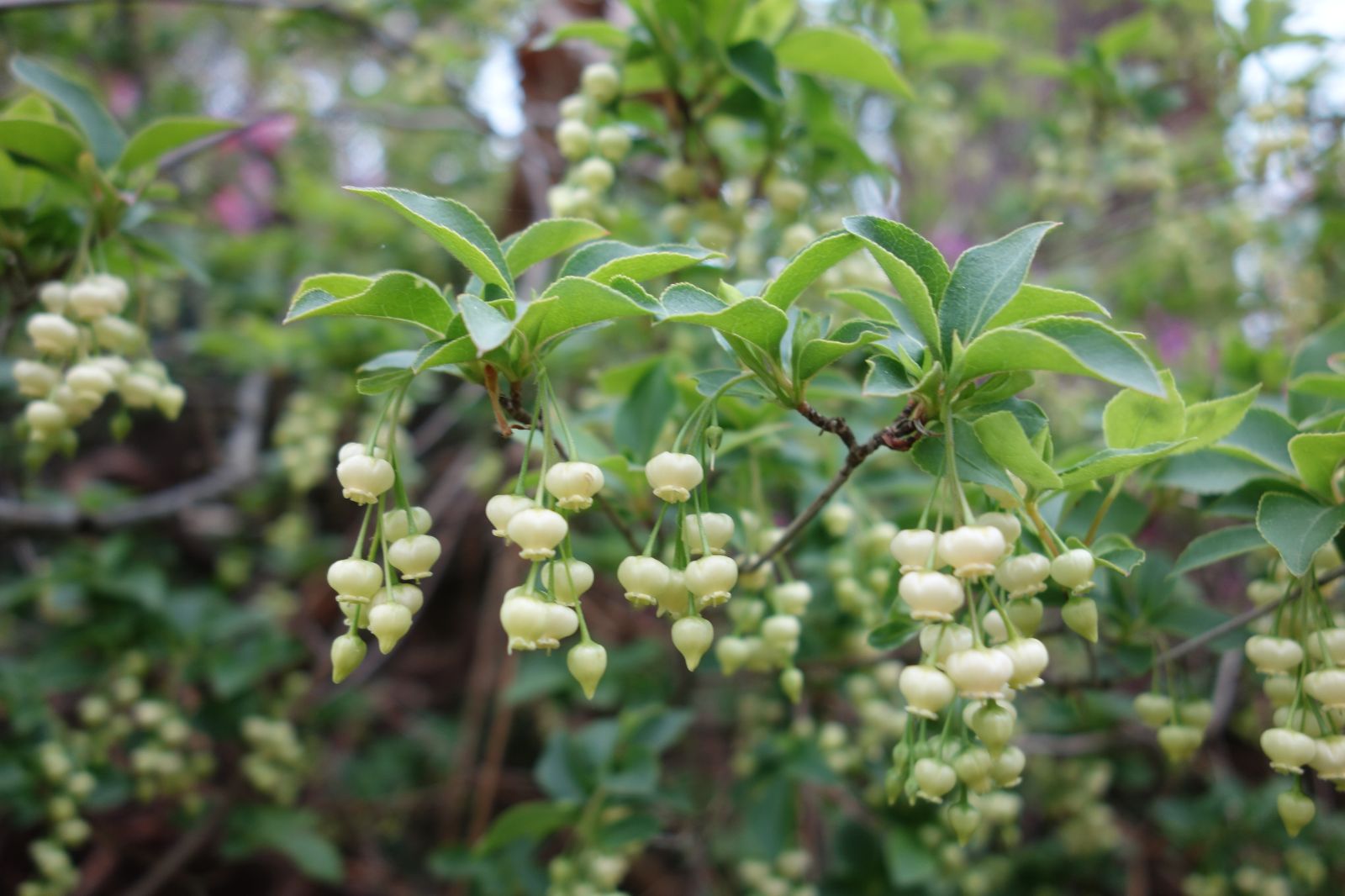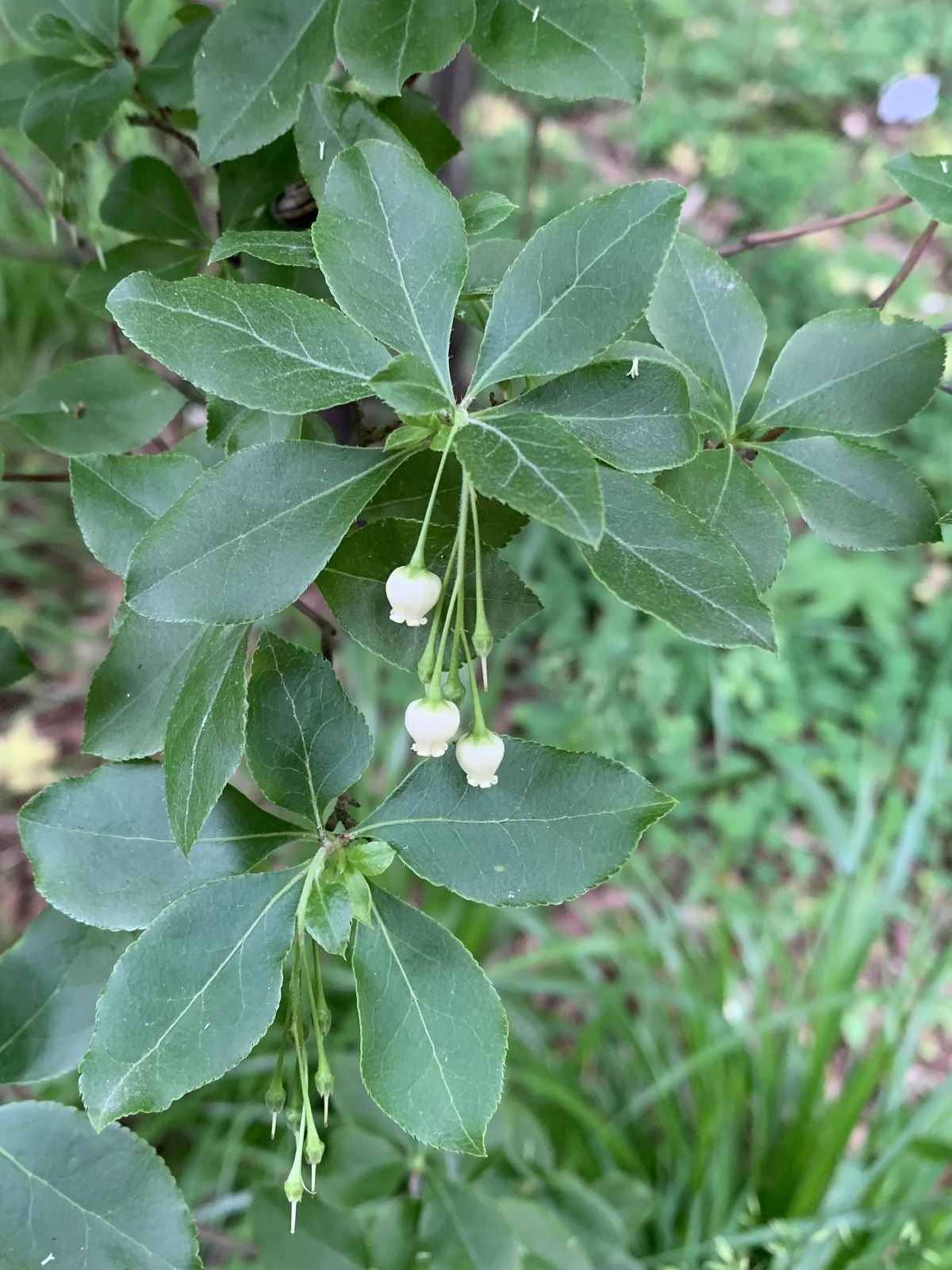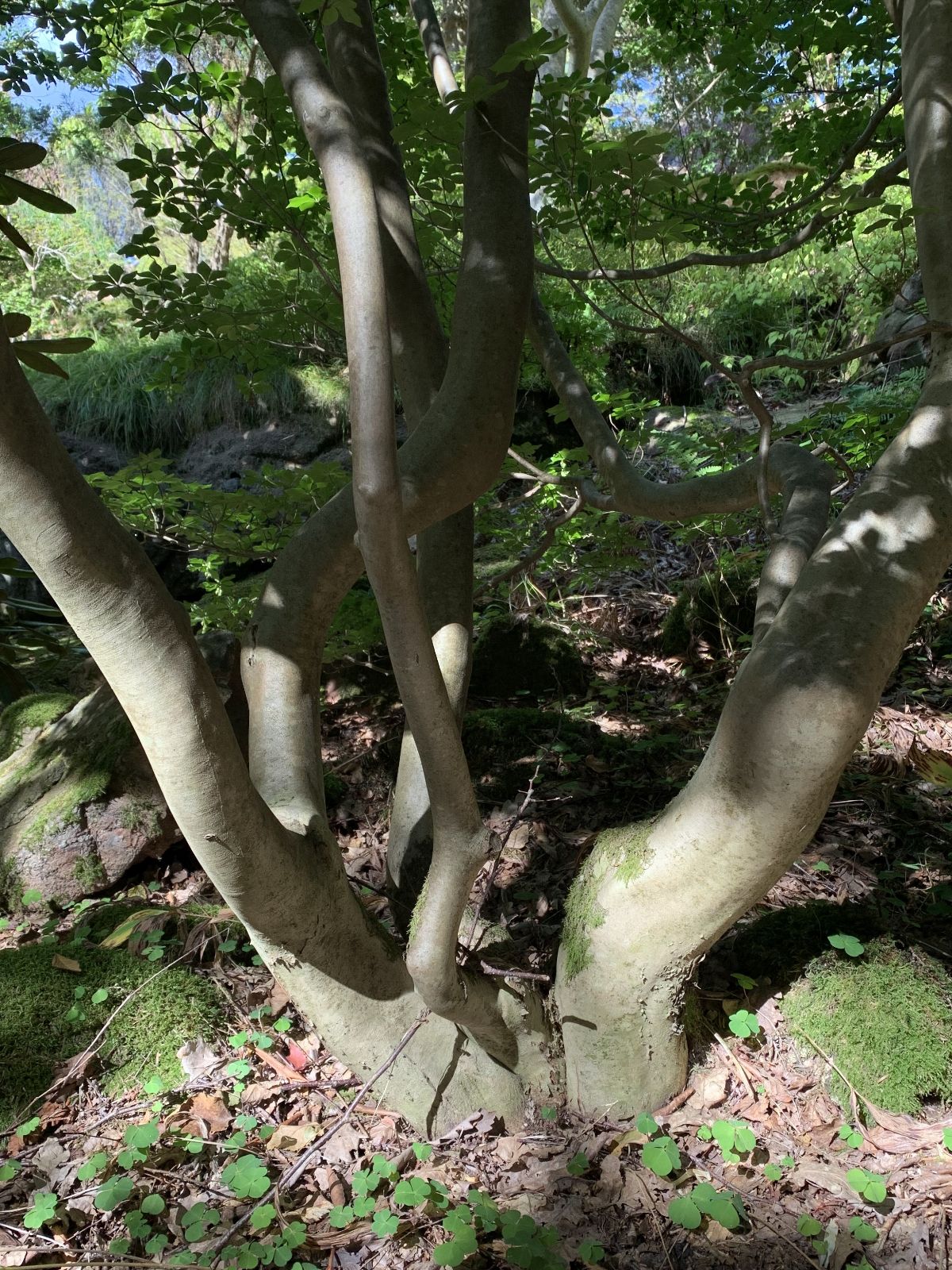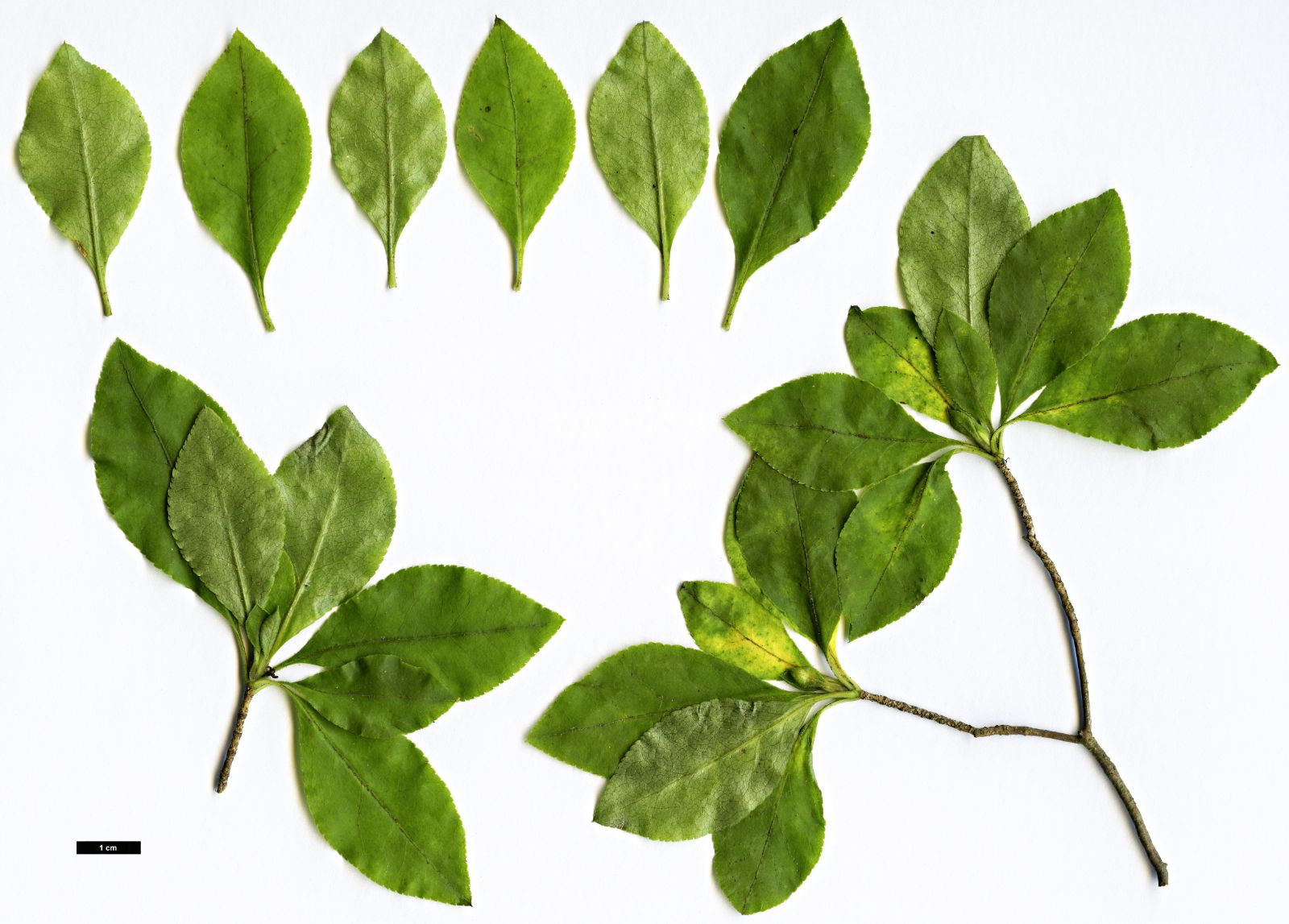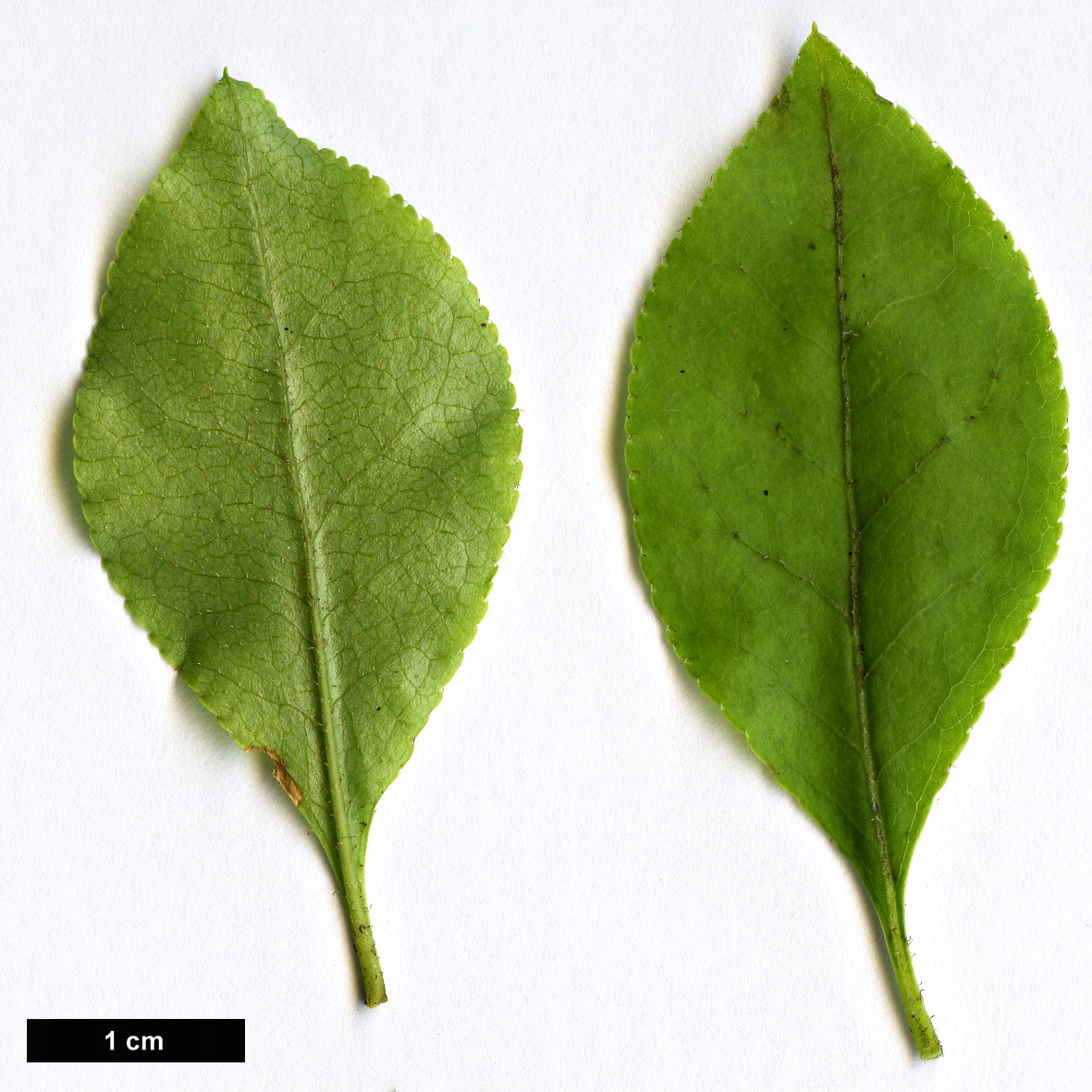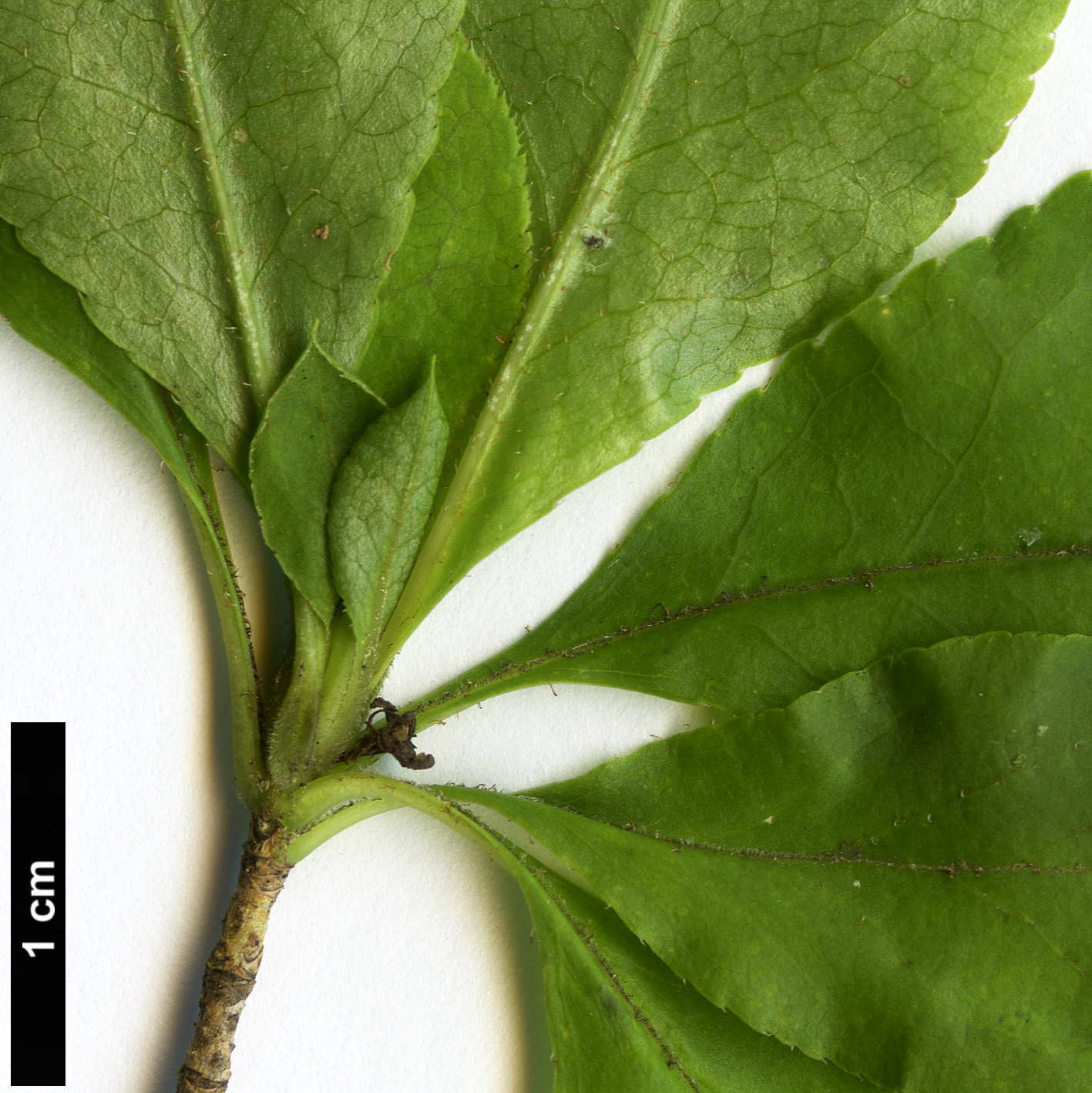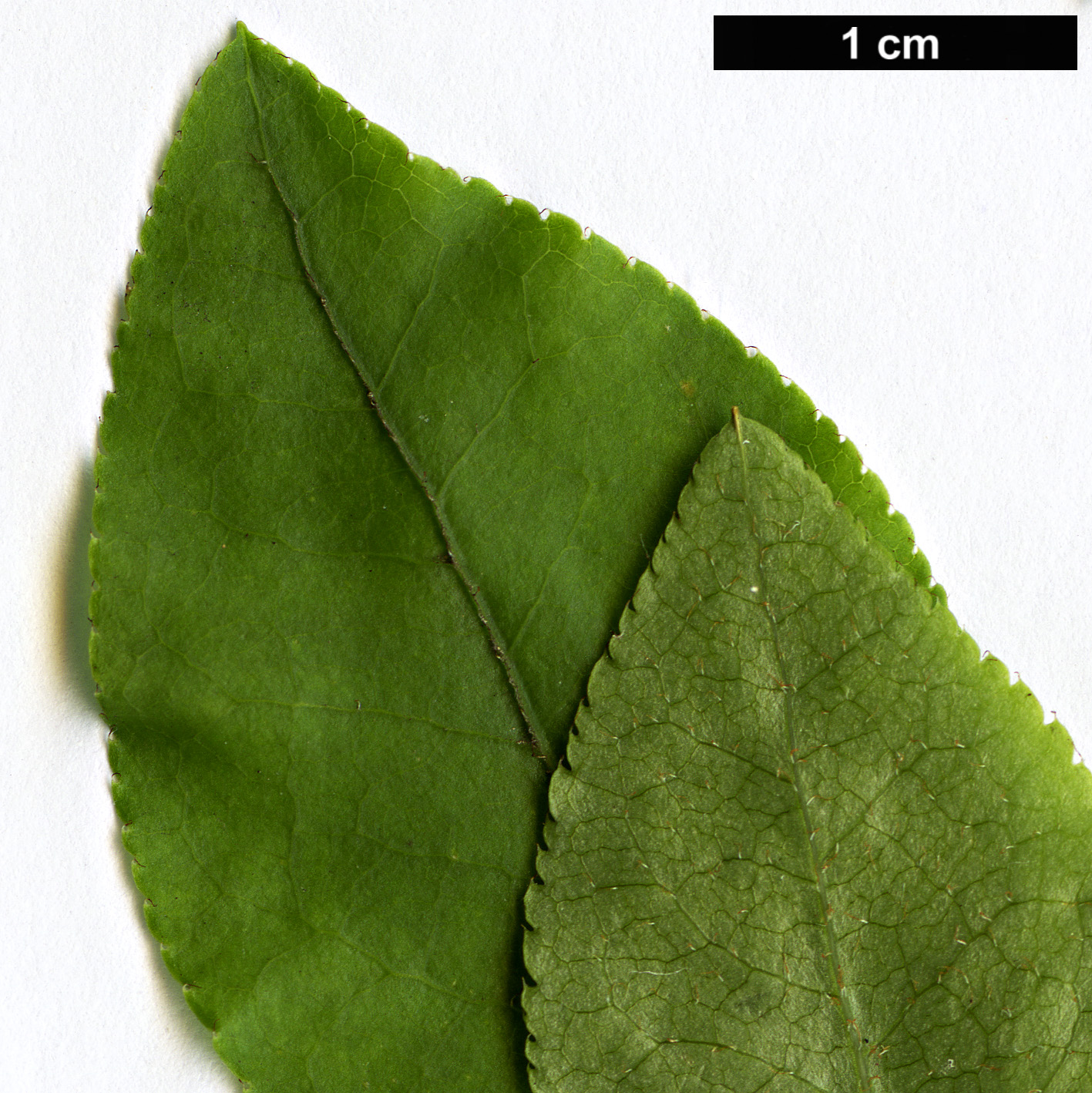Enkianthus subsessilis
Sponsor
Kindly sponsored by
Alasdair and Panny Laing
Credits
Tom Clark (2023)
Recommended citation
Clark, T. (2023), 'Enkianthus subsessilis' from the website Trees and Shrubs Online (treesandshrubsonline.
Genus
- Enkianthus
- Section Andromedina
Common Names
- Abura-tsutsuji
Synonyms
- Andromeda subsessilis Miq.
- Andromeda nikoensis Maxim.
- Meisteria subsessilis (Miq.) Nakai
- Tritomodon subsessilis (Miq.) Maek.
- Enkianthus nikoensis (Miq.) Makino
Deciduous shrub 1–3 m tall. Branchlets terete, glabrous. Leaves alternate on young shoots, generally 5– 6 crowded on branchlets, membranaceous; petiole 1–4 mm long, sparsely pilose; blade oblong-obovate, 1.5–4 × 0.8–2 cm, apex short acute and terminating into a gland, base gradually narrowed, attenuate into petiole, with many minute hookedly acuminate teeth, upper surface glabrous, except short pubescent on midrib, lower surface sparsely pubescent. Inflorescences terminal, racemose, pendulous, 3–5 cm long, 5–14-flowered; corolla urceolate, white, 5 mm long. Raceme axis spreadingly softly white pubescent. Flowering mid-May to late June. (Ohwi 1965, Iwatsuki 1993).
Distribution Japan northern and central Honshu
Habitat Rocky mountain slopes; 100–1400 m asl.
Conservation status Not evaluated (NE)
A bushy shrub producing slender, nodding, downy racemes each bearing six to twelve white, urn-shaped blossoms each with five short, recurved lobes (Bean 1981). It does bear some resemblance to E. perulatus but is actually much more closely related to E. nudipes; together they comprise section Andromedina. E. nudipes differs from the current species in having glabrous racemes (Iwatsuki 1993). It is also worth noting that the dehiscent capsules of E. subsessilis are borne on pedicels that do not turn upward as they mature.
Introduced to cultivation in 1892 by the first director of the Arnold Arboretum, noted American botanist and dendrologist, Charles Sprague Sargent (1841–1927) (Bean 1981) this is another species of subtle floral charm but one that enlivens any planting in autumn with typically fine and richly coloured foliage. Perhaps overlooked and languishing in the shadows of three other very showy and prominent Japanese taxa (E. campanulatus, E. cernuus f. rubens and E. perulatus), E. subsessilis has never enjoyed widespread cultivation in gardens of Europe or North America. It is established in a handful of European botanic gardens including those at Gothenburg, the University of Bergen, and the University of Tubingen (represented in the former two gardens with original wild-source material). A 2018 collecting trip to Japan mounted by members of the Plant Collecting Collaborative including Polly Hill Arboretum (Massachusetts, USA), Arnold Arboretum (Massachusetts, USA) and Morris Arboretum (Pennsylvania, USA) in collaboration with Japanese colleagues collected seed of this taxon (collection number PCC18-HON-005). Other than several accessions at Sonoma Botanical Garden (California, USA) derived from wild-collected seed from Chiba University and a 2007 collaborative collecting trip to central and southern Honshu (collection number BCJMMT 318), the PCC18 collection represents the only known material in North America. Habitat notes on various herbarium sheets include “in deciduous forest”, “mixed deciduous forest on steep mountain slopes”, “growing on rocky, sunny and dry places”, “growing in destroyed forest, open habitat with Acer palmatum var. amoenum and Fagus crenata”.

